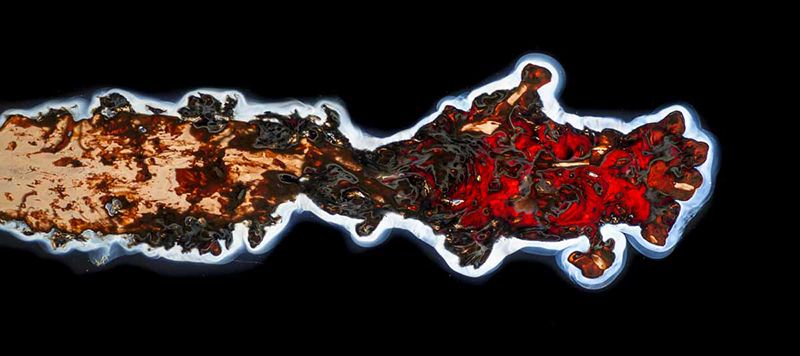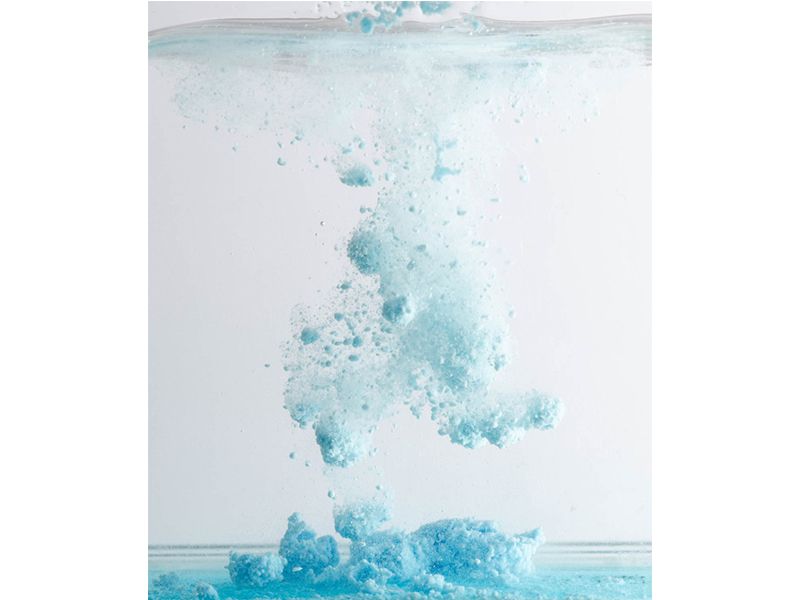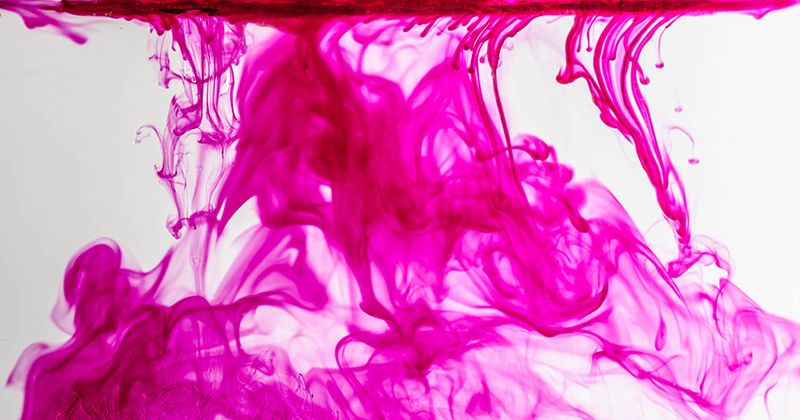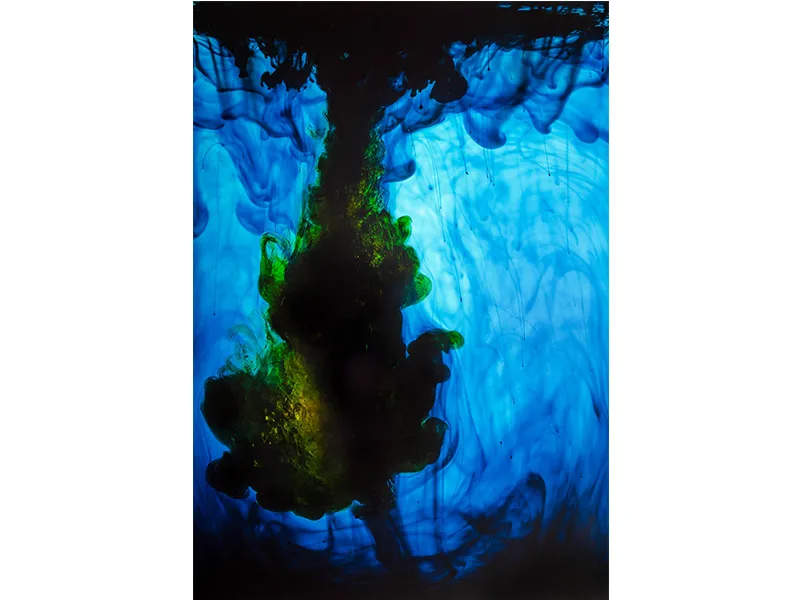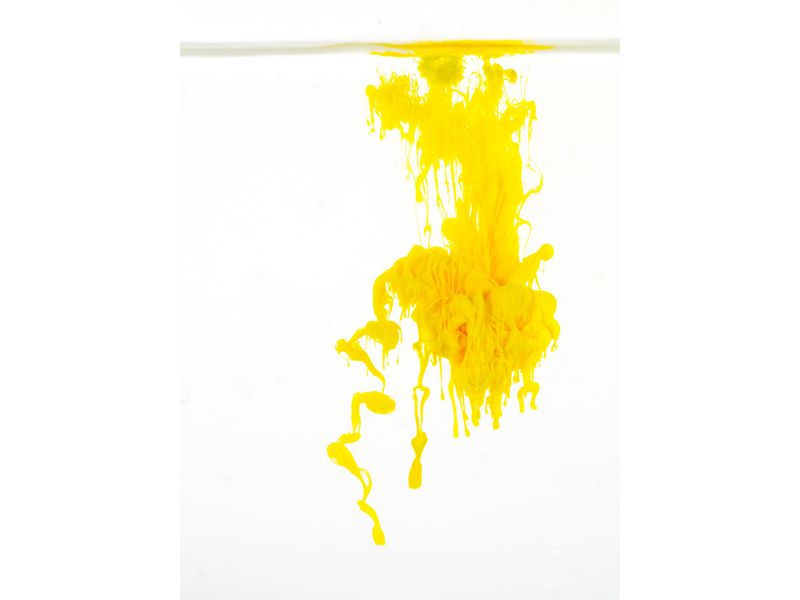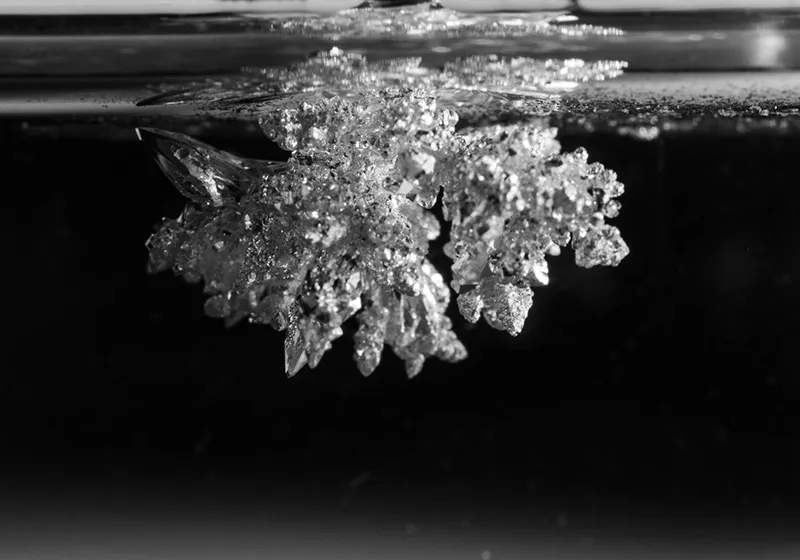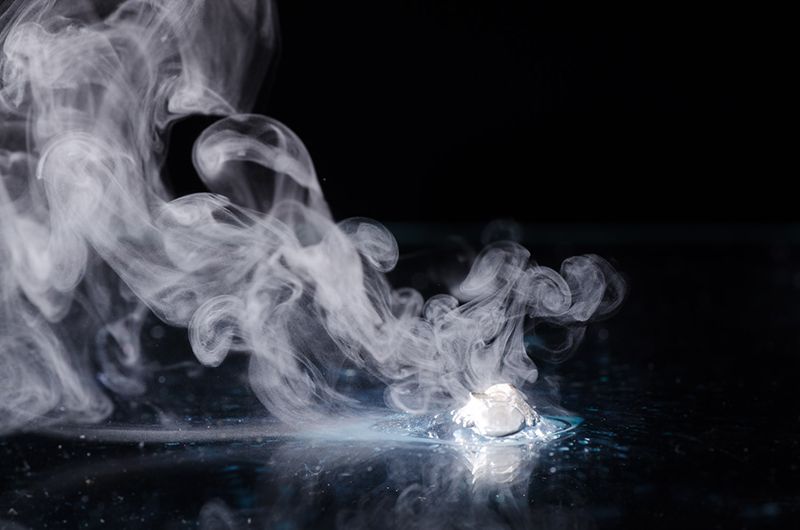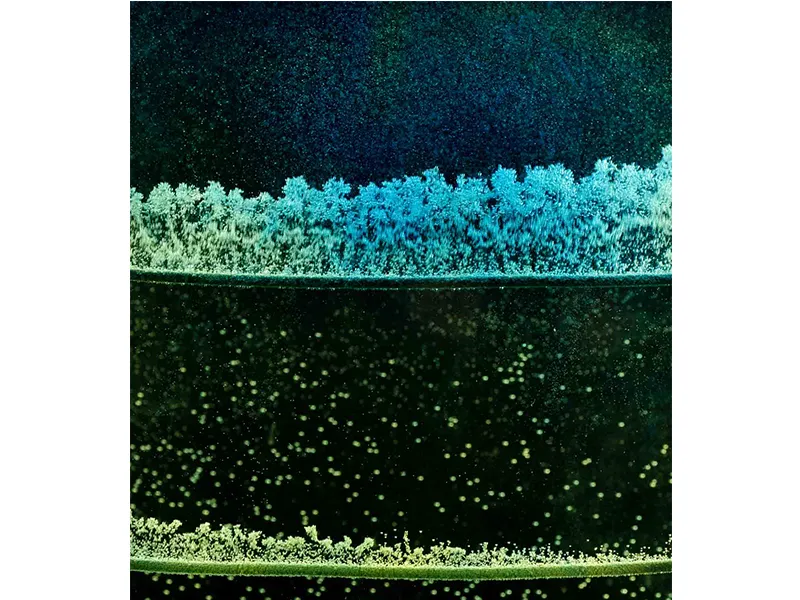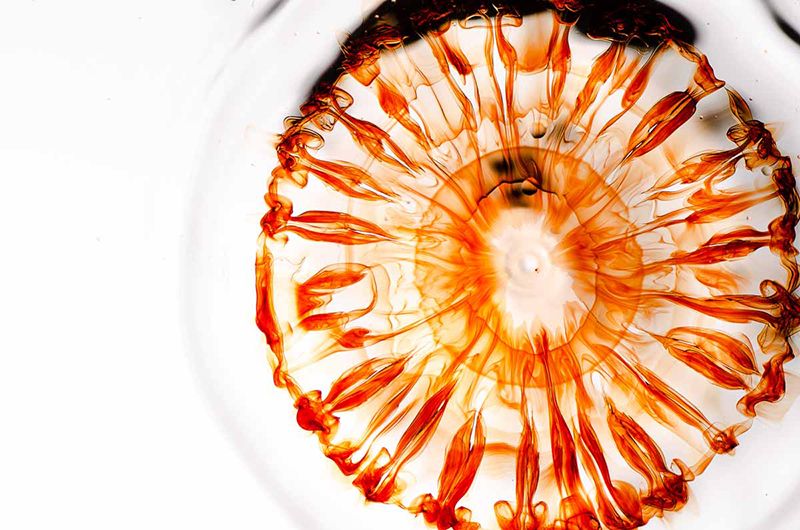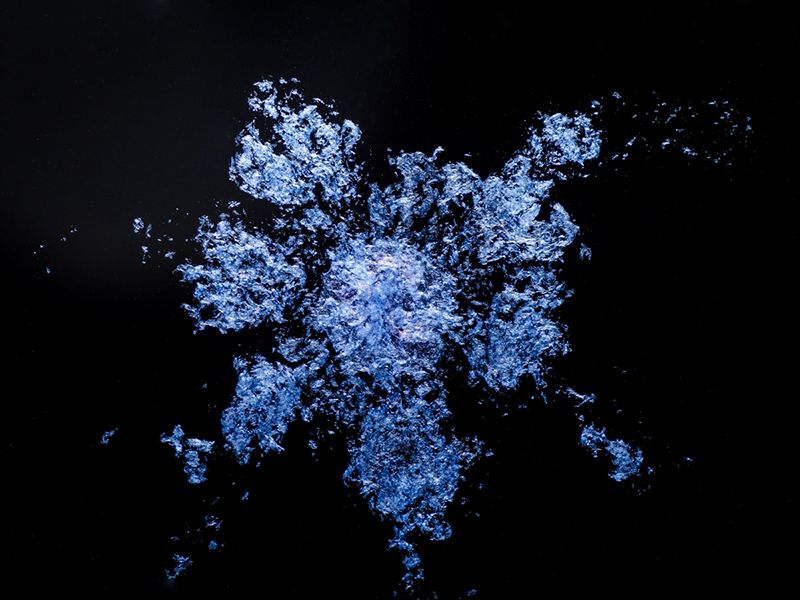Time-Lapse Photos Reveal the Beauty of Metal Crystals Growing
Photographer Emanuele Fornasier spends hours capturing the intricacy of chemical reactions
A strand of what looks like twisted rope, colored with an ombre of watermelon pink to beetle-wing turquoise stretches across the opening shots of Emanuele Fornasier’s "Crystal Birth" video. As the piano melody of the soundtrack picks up, the "rope" gradually gets fuzzy with starburst-shaped growths. A label in the lower right explains that this is a chemical reaction: Cu2+ transforming into Cu (copper).
Silver, tin, bismuth, zinc and other metals follow, all exhibiting the unmetal-like properties of movement, growth and a delicacy that makes them look alive. They are trees, ferns and corals.
Fornasier, a photographer and chemistry student at the University of Padua in Italy, has filmed electrocrystallization, where a metal in liquid solution is forced to become solid by electricity. It's the same process that is used to plate chrome onto motorcycle parts. But for the video, Fornasier sped up the process to build elaborate crystal structures in place of smooth plating.
"If you were electroplating you would stop in the first few frames," Fornasier says. "I didn't want that. I want the crystal to grow in a dendritic structure, which is much more beautiful."
To achieve this look, Fornasier creates solutions with a high concentration of metal ions and lets the crystals grow overnight, under a camera's macro lens and lit with a flashlight. The camera snaps a frame every minute or every few minutes while a very low current runs through the solution. He posted the three-and-a-half minute video, which covers days of crystal growth, on his Vimeo account more than a year ago. It went viral in November.
The rope that starts the video is actually a small twist of copper, suspended in a liquid rich with copper molecules missing some electrons. This shortcoming earns them a charge of +2 and makes them copper ions. When Fornasier sends electricity through the solution, he mobilizes spare electrons, each bearing a single negative charge. Opposites attract and the copper ions meet the electrons, forming copper without a charge. Copper alone cannot remain suspended in solution, so it falls out as a solid and locks onto other copper molecules, forming a crystal shape. The fractal starbursts grow, like ice crystals climbing up a cold windowpane.
Fornasier usually doesn't know what he has until after the experiment has run its course. "Being a chemistry student, I think I know what I'm going to obtain but every time is a surprise to me," he says.
Small bubbles that form at the same time, for example, surround the zinc crystals. These are hydrogen from water in the solution and are the result of a competing reaction. This complication is something Fornasier tries to eliminate, but in the video it adds yet another process to watch.
The 21-year-old is currently studying for a bachelor's degree in chemistry. Electrocrystallization is a fairly advanced topic that involves physical chemistry, physics and mathematics and years beyond his formal studies. So Fornasier has been reading papers, asking questions of a lab group at his university and using the time-honored method of trial and error.
Fornasier’s interest in chemistry started young, in middle school. Something about the detailed mechanisms of chemistry and the unique way of thinking that it requires drew him. Once he started at the university, he also folded in his other passion—photography. "I enjoy taking pictures of almost everything," Fornasier says. "I always wanted to get deeper in understanding how [things] work so I could say everything that I thought would be worth saying."
He sees the discipline and patience required to take photographs of chemical reactions as a good sign for his career. "If I could spend the entire day in the lab photographing the reactions, then I thought [chemistry] really could be something I could do for the rest of my life," he says.
Fornasier's forays into electrocrystallization aren't the only chemical processes he has captured on film. His personal website is a showcase of the beauty of chemistry. Precipitation reactions—where adding two solutions causes a solid to suddenly form and fall out of liquid—show up as dreamy clouds of color. Yellow puffs and swirls against a white background are lead iodide. A red-orange blossom racing to the edge of the frame is a droplet of iron thiocyanate opening as it hits a glass surface.
Every reaction he has on his website is something that can take place in a single vessel. "I just tried to optimize the background and the place where the reaction happens to have the viewer see it," Fornasier says. The camera’s ability to capture different timescales—the long-lived through time lapse and the instantaneous through quick shutter speeds—is key.
Some efforts require some creative thinking. The metals he uses can be expensive, so he crafted a very small "beaker" out of glass and silicone, so that only a small amount of solution is needed. Others are solutions pipetted onto a glass surface parallel to the floor and suspended over an upward-pointing camera.
The abstract patterns of color exploding, flowering and misting across plain backgrounds is visually striking enough. But add the knowledge of a student who is enchanted with the minutia of the mechanics of these chemical reactions and the photos are enchanting.
"Very few people think about how many things are made possible by chemistry," Fornasier says. "Chemicals are mainly perceived as something toxic." While he doesn't seek to fight against people's misconceptions of chemistry, he does hope that the images he creates spark some curiosity. "I just make available what I think is beautiful to everyone."
